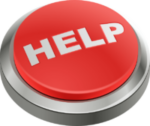The look on peoples’ faces when they come to us with a computer whose hard drive has crashed, and we ask if they have a backup is heartbreaking. They often answer no and we don’t understand why more folks don’t place the importance on backing up their data that they should. My dentist says, “only brush the teeth you want to keep”. That’s the same sentiment with your data…”only backup the stuff you wanna protect”.
Why You Need to Backup
Disruptions of any kind can be costly in either real money or emotional drama. The disaster might take one of several shapes:
- Natural (e.g. wildfires, floods, earthquakes, or hurricanes)
- On-site (e.g. hardware/software failure, power outage, inability to access building)
- Employee or family member-driven (e.g. damaging mistakes or intentional sabotage by a disgruntled employee or angry teenager!)
- Cyber-attack (e.g. data breach, ransomware, or distributed denial of service attack).
Regardless, the best backup solution can help reduce downtime, damage…and drama.
Approaches to Backup
There are several off-the-shelf backup options you can use. Let’s consider the pros and cons of the most popular ones.
USB Thumb Drives — Also known as “flash drives,” “pen drives,” or “memory sticks,” these thumb-sized devices are compact and portable. But…they have size limitations compared to hard drives. Also, the mobility makes them easy to lose (which can actually set the disaster scenario in motion).
Additionally, a USB thumb drive is robust when not plugged in, but more vulnerable when attached. If someone inadvertently snaps the drive or employs too much force, they can put the data on that backup at risk.
The cheap ones also tend to be slow, which can make backing up sluggish.
USB Hard Drives — Portable hard drives increase the data storage available, often at a decent price. They are designed to be compact and mobile. You can prioritize durability, processing speed, storage volumes and more.
Hard drives are less likely to get damaged than a thumb drive. If knocked or jostled, the cables are flexible. Still, a hard drive can be prone to physical failure. Selecting an external solid slate drive (SSD) can help since it has no moving parts. Information is stored instead on microchips.
Networked Attached Storage (NAS) – This can be a great solution when 2 or more computers need to be backed up. Basically, it’s a hard drive in a box that attaches to your network router. Your wired and wifi computers can connect to it and perform a routine backup each night. These can be costly, but there’s no denying their value when protecting multiple computers is your goal.
Cloud Storage — Backing up to the cloud stores data on an external, secure server. If thieves take your computers and USB backup, you can still access your data on the cloud. Cloud storage providers build in redundancy to ensure your backup remains safe.
Most cloud storage services back up to secure centers with thousands of servers storing data. Oh, and they’ll have their own server backups too, just in case they’re the ones hit by a disaster. The providers also encrypt data during transit to further ensure compliance and security.
Migrating to a third-party cloud storage service also cuts the clutter at your premises. You can count on expert help to ensure security and compliance. Plus, you can cut operational costs by offloading in-house storage or external hard drive expenses.
OK, so what’s the best answer?
Don’t think disaster won’t strike your home or business. Research has found data loss and downtime are most often caused by:
- Hardware failures (45% of total unplanned downtime)
- Loss of power (35%)
- Software failure (34%)
- Data corruption (24%)
- External security breaches (23%)
- Accidental user error (20%).
We recommend the 3-2-1 backup strategy. This means having 3 copies of your data. Two (2) of these would be located on different devices (e.g. on your computer and on a backup drive). The other remaining backup copy (1) would be secured offsite, in the cloud.
Want to secure your data the right way and avoid the drama? Give us a call at (732) 747-0020 to set this up and put you at ease.


